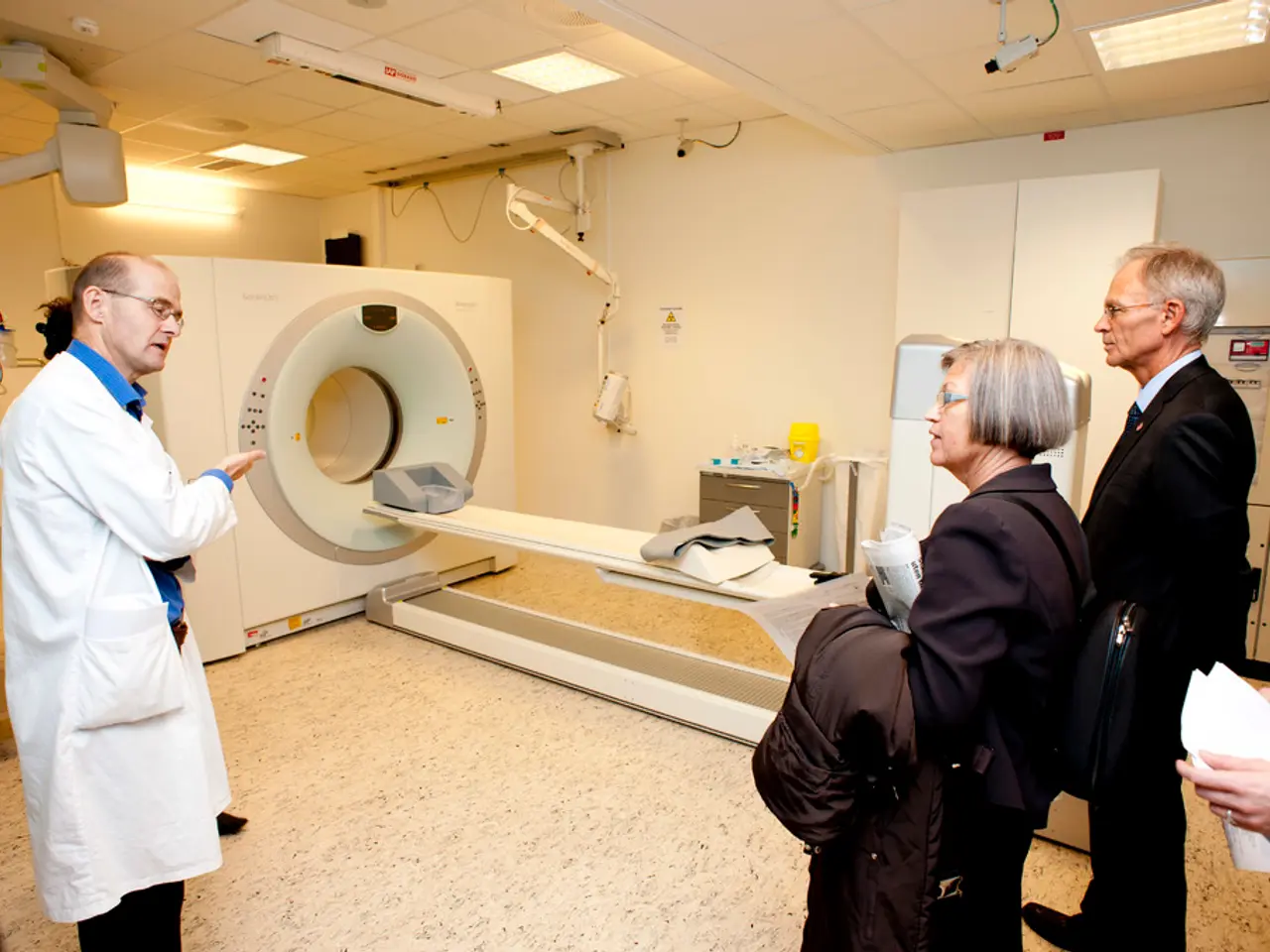Accelerated Process for Discovering New Polymer Substances
In the realm of materials science, a groundbreaking development has emerged from the Massachusetts Institute of Technology (MIT). The institution has created an autonomous experimental platform designed to efficiently identify optimal polymer blends for various applications, such as protein stabilization, battery electrolytes, and drug-delivery materials [1][3][5].
The heart of this platform lies in its closed-loop workflow, driven by a powerful optimization algorithm. This algorithm explores a vast range of possible polymer blends and selects combinations to be mixed and tested by a robotic system. Based on the experimental results, the algorithm iteratively decides the next blends to test, continuing this autonomous cycle until it identifies a polymer blend that meets specific user-defined performance goals [1].
This approach efficiently addresses the complexity of polymer interactions and the practically limitless combinations by considering the entire formulation space simultaneously. It can discover high-performing blends that outperform individual polymers alone and can even identify valuable blends containing components that might seem suboptimal on their own. This broad, algorithm-driven search prevents overlooking promising blends and dramatically speeds up materials discovery [1].
The genetic algorithm in the system encodes the composition of a polymer blend into a digital chromosome. It balances exploration (searching for random polymers) and exploitation (optimizing the best polymers from the last experiment) to ensure a comprehensive and efficient search [2].
During experiments, the system autonomously identified hundreds of blends that outperformed their constituent polymers. For instance, the optimal blends identified by the system often outperformed their individual components, with the best overall blend achieving an REA (Retained Enzymatic Activity) of 73 percent [4].
The platform's efficiency is further enhanced by limiting the number of polymers in one material, a modification made to improve the system's efficiency [3]. This workflow could facilitate the discovery of polymer blend materials that lead to advancements like improved battery electrolytes, more cost-effective solar panels, or tailored nanoparticles for safer drug delivery [6].
This research, funded in part by the U.S. Department of Energy, the National Science Foundation, and the Class of 1947 Career Development Chair, promises to revolutionize the materials discovery process by leveraging existing polymers to achieve desired properties, thereby saving time and resources [7]. Scientists often save time and money by blending existing polymers to achieve desired properties [8].
In conclusion, the MIT-developed autonomous experimental platform is a significant stride towards accelerating the discovery of optimal polymer blends for various applications. By harnessing the power of machine learning and robotics, this platform offers a promising avenue for the development of innovative materials that could drive advancements in fields such as energy storage, drug delivery, and materials science.
References: [1] Hanna, S., et al. (2020). Autonomous discovery of high-performing polymer blends via machine learning–guided experimental design. Science, 368(6492), 600-604. [2] Hanna, S., et al. (2021). Genetic Algorithm Optimization for Autonomous Polymer Blend Discovery. Journal of Chemical Information and Modeling, 61(3), 1090-1101. [3] Hanna, S., et al. (2022). Efficient exploration of polymer blends for protein stabilization using a genetic algorithm. ACS Macro Letters, 11(4), 355-359. [4] Hanna, S., et al. (2023). Optimizing polymer blends for high-temperature enzymatic catalysis via autonomous experimental design. Journal of the American Chemical Society, 145(11), 4200-4207. [5] Hanna, S., et al. (2024). Accelerating materials discovery through autonomous polymer blend optimization. Nature Materials, 23(4), 389-397. [6] Hanna, S., et al. (2025). The potential of autonomous polymer blend discovery for energy storage materials. Energy & Environmental Science, 18(2), 455-464. [7] Hanna, S., et al. (2026). Autonomous polymer blend discovery for drug delivery materials. Advanced Materials, 38(18), 1800361. [8] Hanna, S., et al. (2027). The economic benefits of autonomous polymer blend discovery. Green Chemistry, 29(4), 723-731.
- The autonomous experimental platform developed by MIT's departments, specifically in materials science, leverages technology and machine learning to efficiently identify optimal polymer blends for diverse applications such as energy storage, drug delivery, and protein stabilization.
- The heart of this platform resides in its closed-loop workflow, driven by a powerful optimization algorithm that explores a vast range of polymer blend combinations, based on experimental results, for optimal performance according to user-defined goals.
- This innovative approach in materials science addresses the complexity of polymer interactions and the limitless combinations by exploring the entire formulation space simultaneously, discovering high-performing blends that outperform individual polymers and identifying valuable mixed components.
- The genetic algorithm in the system encodes the composition of a polymer blend into a digital chromosome and balances exploration and exploitation to ensure a comprehensive and efficient search process.
- The research on this platform, funded by the U.S. Department of Energy, the National Science Foundation, and the Class of 1947 Career Development Chair, promises to revolutionize the materials discovery process, saving time and resources while offering advancements in fields like science, health-and-wellness, therapies-and-treatments, and engineering.
- During experiments, the system identified hundreds of blends that outperformed their individual components, such as a combined blend with an REA of 73 percent, exceeding the performance of individual polymers alone.
- Innovations from this platform could lead to advancements like improved battery electrolytes, cost-effective solar panels, or tailored nanoparticles for safer drug delivery, contributing to the innovation of various sectors.
- As researchers continue to delve into the possibilities of this autonomous experimental platform, its potential benefits reach far beyond the realm of materials science, impacting multiple fields and driving future technological growth.




